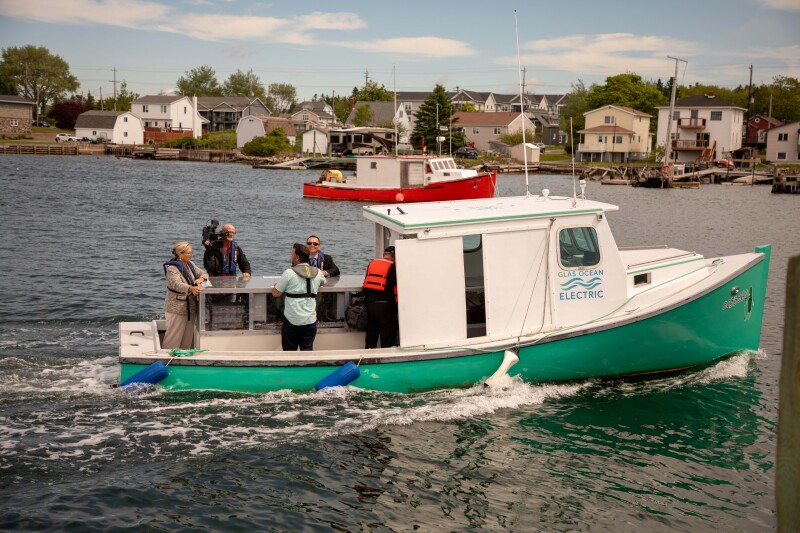Hybrid diesel/electric-powered lobster boats are a reality, and Glas Ocean Electric, which has been on the cutting edge of the idea and the supporting technology, took the process a step closer with the launch of the Sea Cucumber in Halifax in June. “We chose to convert this particular boat because it is small enough to trailer to locations around the east coast so we can let captains and crew try out electric propulsion,” says Dr. Sue Molloy, Chief Executive Officer at Glas Ocean Electric. “We have also recently completed installing a serial hybrid version of our system on a working lobster boat.”
In preparing for hybrid conversions, Glas Ocean Electric has developed analytic software it calls, PerforMarineTM, that can monitor vessel performance and determine if a hybrid system is appropriate. If a vessel can benefit from a hybrid power system, the company can install its HyMarine system.
Much of the guts of the Sea Cucumber’s hybrid powertrain are set up above deck in a see-through housing. “The main components visible are the power electronics,” says Molloy. “They control the power, the cooling, and monitor the temperature of the battery among other functions.” Below deck, the Sea Cucumber has a relatively small 44-hp Sole mini diesel. The gear on the engine can run the diesel in tandem with the battery-powered electric motor, but optimally the engine can be shut down and enable the boat to run quietly on electric power alone for a good six hours, and potentially more.
“This is an option that is not standard but can be added in systems,” Molloy shares. The 98kWh Akasol battery is built to Glas Ocean Electric specifications and weighs approximately 1000 pounds.
Glas Ocean Electric engineer Brad Purdy notes that the battery, the charger, the electric motor, and the engine are all water-cooled. While the Sea Cucumber is not equipped with hydraulics, Purdy points out that the system is set up to run hydraulics. “For a boat that wants to run steering and a hauler, or what have you, in the power electronics there is a power output that can run a 30kW AC motor for your hydraulic pump. That’s more than enough to run a typical hauler.”
To date, Glas Ocean Electric has installed the system aboard an active lobster boat. A recently announced $6.5 million-dollar ($4.7 million US) Fisheries and Aquaculture Energy Efficiency Innovation Fund launched by the Nova Scotia government to help reduce emissions should help some fishermen cope with the cost of the hybrid systems. Molloy and the GOE team have collected data for over eight years from over 20 vessels. They are confident that their system will result in a 50-70% fuel reduction for the average lobster fisherman in Nova Scotia. The carbon emissions reductions resulting from these systems will meet many government GHG program goals. “We’re expecting to put the PerforMarine software on six 15-ton boats in the coming months,” says Purdy. “That will give us a lot more data.” Molloy and Purdy expect that data and support from the Nova Scotia government will help convince fishers to install the HyMarine Kit.







